Lanzarote: Volcanic Landscapes, History and Activities not to be missed
Discover on your own the island of Lanzarote, a jewel in the Atlantic known for its unique nature and rich culture.
Its landscapes are marked by volcanic activity, with terrain that sometimes looks like something out of another world, especially the Timanfaya National Park. This island is also a canvas for the famous local artist César Manrique, whose work blends perfectly with the natural environment.
In addition, Lanzarote has a rich winemaking tradition, with its characteristic crater vineyards protected from the wind. Lanzarote is not only a tourist destination, it is a place of discovery and connection with nature and art, offering a unique experience to every visitor.
Lanzarote is the third most populated island of the Canary Islands, after Tenerife and Gran Canaria, and is the fourth largest island of the archipelago.The entire island has been a UNESCO Biosphere Reserve since 1993.
Population of the island in 2023: 159,000 inhabitants
Capital: Arrecife
Ethnic origin: Conejero/Conejera
What to see and do in Madeira in 3, 5 and 7 days: Complete Itineraries
The best activities and experiences in Madeira to enjoy to the fullest
The best coworking and coliving in Madeira: your definitive guide
1. Lanzarote: Geography and Nature
Lanzarote is characterized by its unique geography and its impressive connection with nature. Volcanic landscapes, nature reserves and biodiversity make up a unique environment that attracts nature lovers and sustainable tourism.
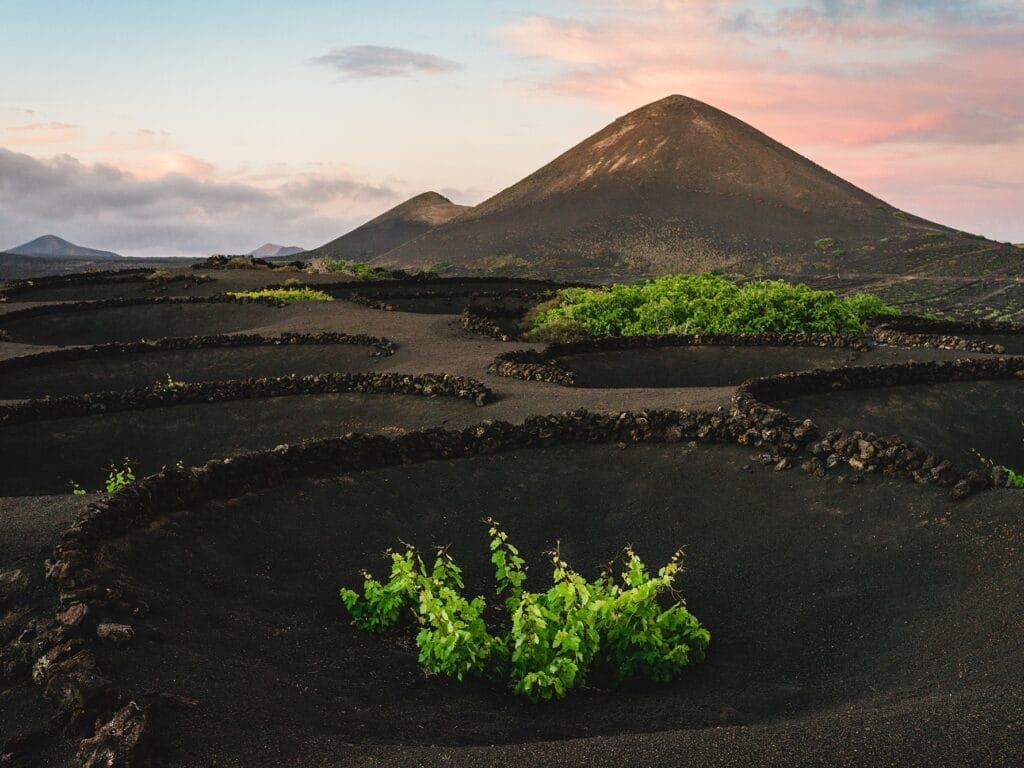
Volcanic Landscape
Lanzarote’s landscape is undoubtedly one of the most impressive in the world. The island was forged by intense volcanic eruptions that began thousands of years ago and have left indelible traces in its geography. Its appearance resembles the surface of Mars, with expanses of solidified lava, volcanic cones and craters that give rise to an unparalleled visual spectacle. The various earth tones that vary between the black of the lava, the red of the soil and the green of the vegetation create an impressive contrast.
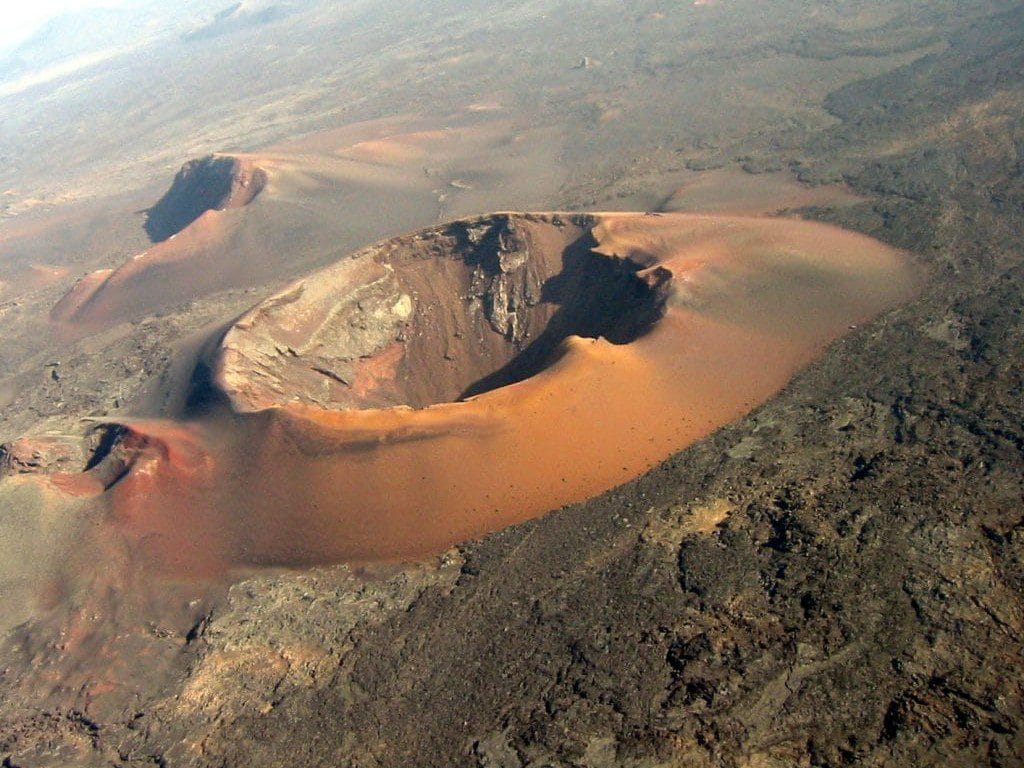
Timanfaya National Park
The Timanfaya National Park is the jewel in the crown of Lanzarote. This vast space, which covers about 51 square kilometers, is a place where the force of nature is shown in all its splendor. The volcanic eruptions that took place between 1730 and 1736 gave birth to this park, turning it into a surreal scenario where visitors can experience the magic of volcanism.
Fire Mountains
At the heart of the National Park are the Fire Mountains. This set of mountains offers a guided tour that allows visitors to observe the geothermal activity of the site up close. At certain points, demonstrations showing the warmth of the earth, such as the use of underground heat to cook food, can be performed, adding an extra touch of wonder to the visit.
Flora and Fauna
Despite its extreme conditions, flora and fauna have found their place in this challenging environment. Vegetation has adapted to the arid and volcanic soil, giving rise to unique species found nowhere else on the planet. Some plants, such as cacti and cactus, have developed special characteristics to survive. Likewise, the fauna includes endemic species and birds that find refuge in this impressive landscape.
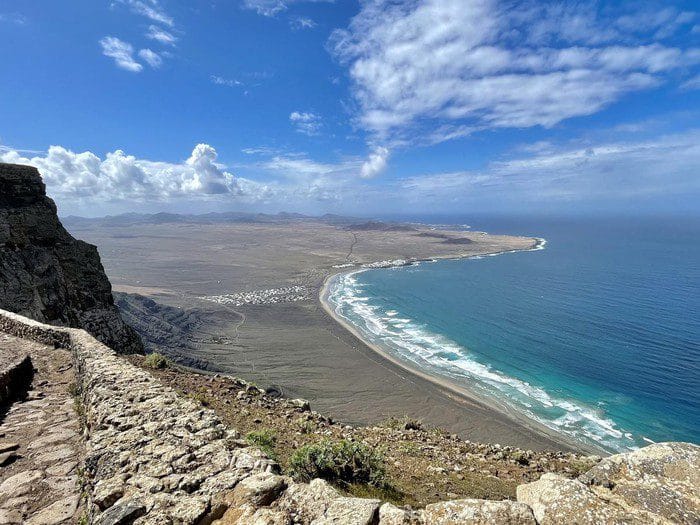
Protected Natural Spaces
Lanzarote is not only distinguished by the Timanfaya National Park, but is also home to other protected natural areas that contribute to its rich biodiversity.
El Jable
The Jable is one of the most outstanding geographical features of Lanzarote. It is an extensive area of sand and vegetation that extends along the coast. This ecosystem is home to diverse species of flora adapted to coastal conditions and fauna, including migratory birds. The tranquility of El Jable makes it an ideal place to enjoy nature and observe wildlife.
Famara Coast
The Costa de Famara is another natural space that impresses with its beauty. With cliffs that rise majestically over the ocean, it is a refuge both for water sports lovers and for those seeking a moment of peace and connection with nature. The beaches of Famara are renowned for their waves, ideal for surfing, but also offer quiet areas where you can contemplate breathtaking sunsets. The marine and terrestrial biodiversity of this area is remarkable and deserves to be protected.
2. History and Culture of Lanzarote
History and culture are fundamental elements that shape the identity of the island. Over time, Lanzarote has experienced various cultural influences that have left a remarkable mark on its heritage.
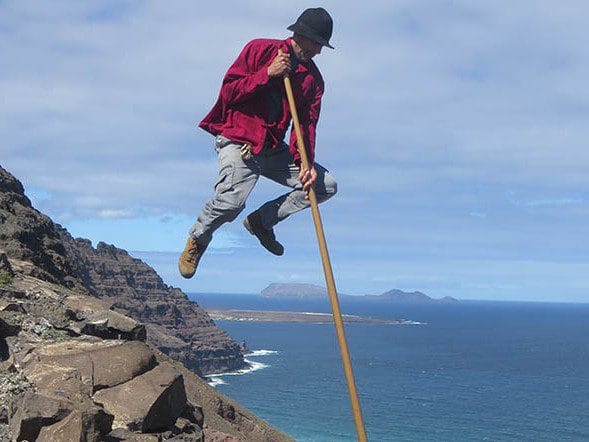
Aboriginal Influence
The first inhabitants of Lanzarote were the aborigines, known as the majos. These people, who settled long before the arrival of colonizers, developed a culture adapted to the adverse conditions of the island. Their life revolved around agriculture and fishing. They used ingenious techniques to cultivate the scarce fertile soils, as well as to take advantage of the resources of the sea.
Archaeological remains found on the island, such as cave paintings and stone tools, provide valuable evidence of their existence. The connection of the Majo people with nature and their ability to adapt to the volcanic environment reflect a deep respect for the land they inhabited.
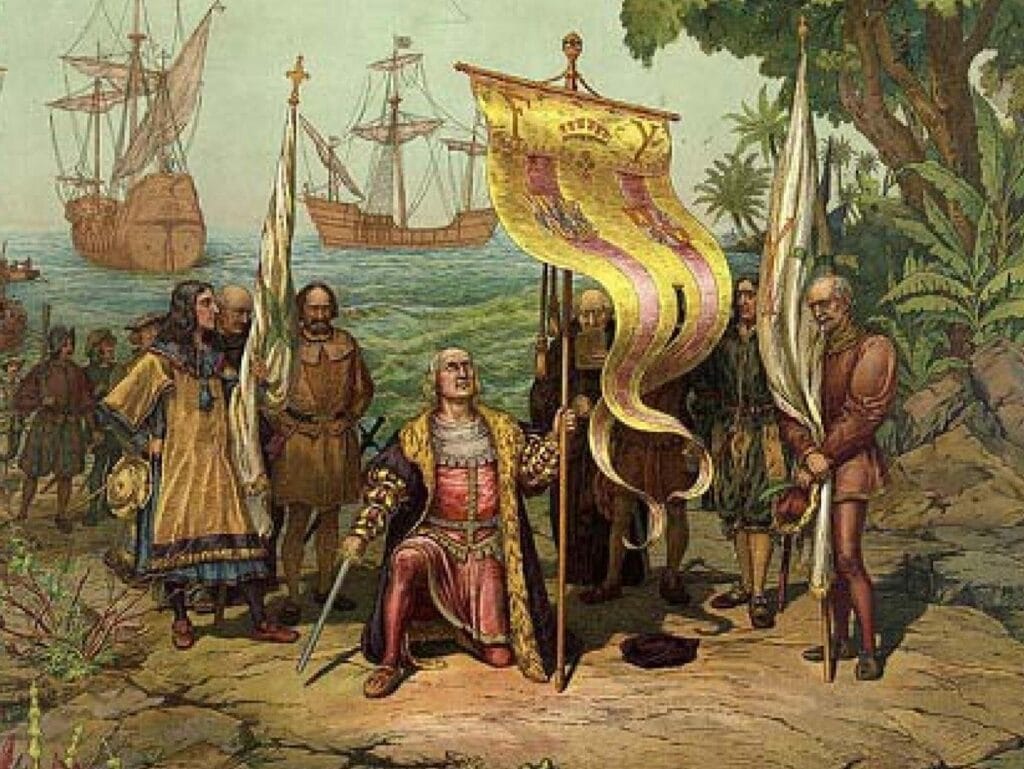
Norman Conquest
The arrival of the Normans in the 14th century marked a radical change in the history of Lanzarote. Led by Lancelotto Malocello, the Normans arrived on the island in 1312, establishing a colonization process that transformed the local culture. Initially, the Normans were dedicated to the exploitation of natural resources and the introduction of new agricultural techniques.
This period not only influenced the economy of Lanzarote, but also left an indelible mark on its culture. The arrival of new traditions and customs changed the way of life of the locals, giving rise to a cultural mix that still persists. The construction of new infrastructures, the development of livestock and the introduction of new crops remain as legacies of this era.
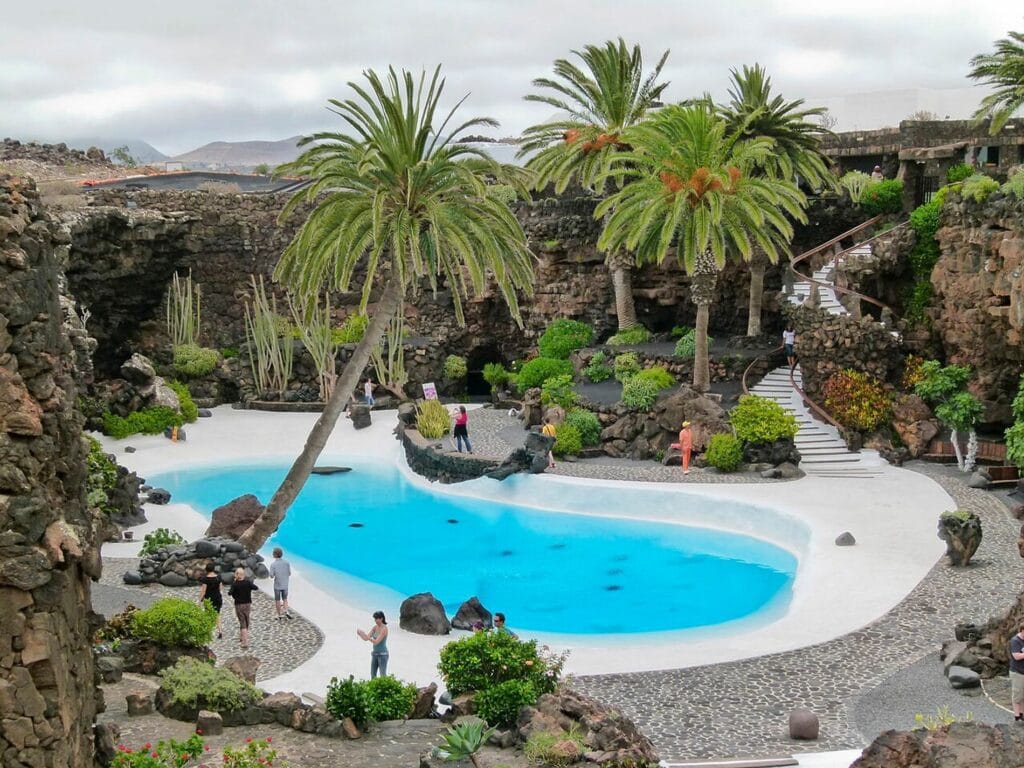
Legacy of César Manrique
César Manrique, a native of Lanzarote, was a prominent artist and intellectual whose work had a significant impact on the island. His vision of the integration between nature and architecture established a new paradigm in the tourist development of the place. Manrique advocated a balance between progress and the preservation of the natural environment, a situation that is still reflected on the island today.
Integration of Nature and Art
Manrique’s philosophy is based on the idea that nature and art can coexist in harmony. Through his projects, he managed to integrate the natural beauty of Lanzarote in a respectful way in his works. His approach influenced urban development policies, making Lanzarote a benchmark for sustainability in tourism.
Emblematic Works
Among the most emblematic works of César Manrique are the Jameos del Agua and the Cactus Garden. The Jameos del Agua are a series of volcanic formations that have been transformed into a cultural and recreational space. This place is a testimony of its genius, where the beauty of the environment is combined with artistic and leisure spaces. Likewise, the Cactus Garden presents an impressive collection of cacti, all integrated into the volcanic landscape in a natural and surprising way.
His legacy is not only limited to architecture; he also promoted local culture, promoting festivals and activities that celebrate the island’s traditions. This dedication has contributed to preserving Lanzarote’s cultural identity in the midst of modernity.
Gastronomy and Wines
Lanzarote's gastronomy reflects the richness of its natural environment and cultural heritage. Influenced by the sea and local agriculture, the island's cuisine is characterized by fresh flavors and traditional dishes that delight visitors. The region's wines, produced in a unique environment, perfectly complement this culinary experience.
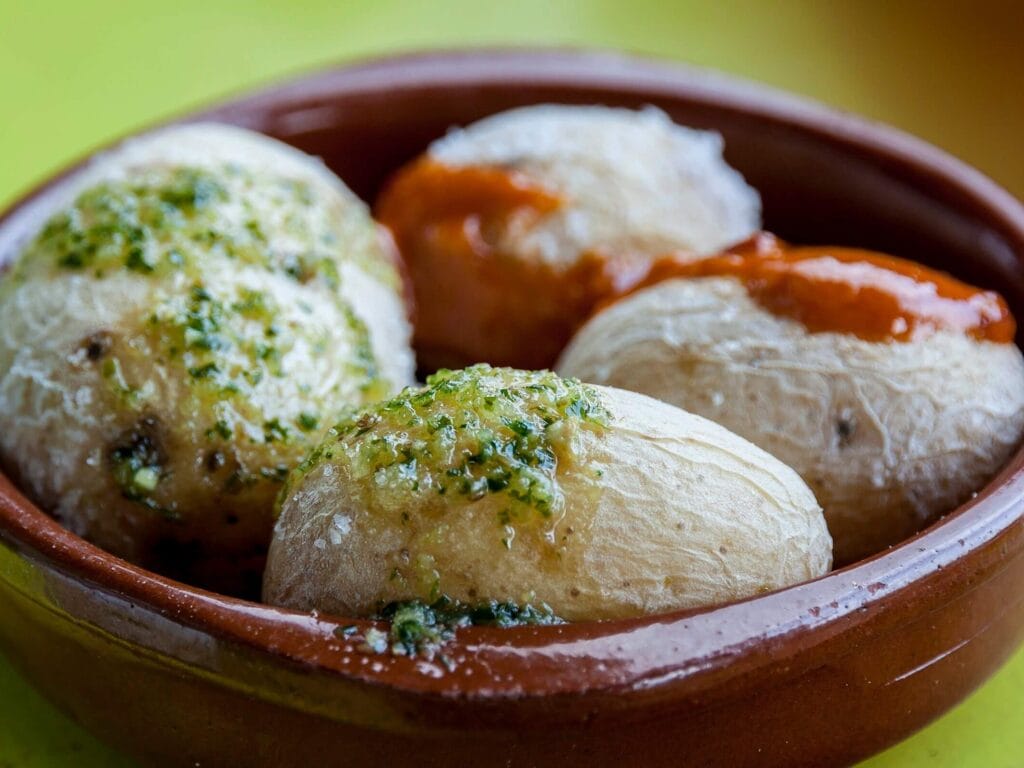
Typical Dishes
Lanzarote’s cuisine is full of native flavors that honestly represent the island’s culture. Among the most outstanding dishes are:
Gofio
Gofio, an ancestral food made from toasted cereals, is a staple in the Canarian diet. It can be found in different varieties, and is used in stews, as an accompaniment or even in desserts. Its texture and flavor give a singularity to each dish in which it is included, being a symbol of the gastronomic identity of the island.
Wrinkled Potatoes
Papas arrugadas (wrinkled potatoes) are another emblematic dish. This simple delicacy consists of small potato tubers cooked in their skins in salted water, which gives them a wrinkled texture and an impressive flavor. They are usually served with mojo, a traditional sauce that can be green or red, and is made from garlic, oil, vinegar and spices. This combination creates a perfect contrast that brings out the natural flavors of the potatoes.
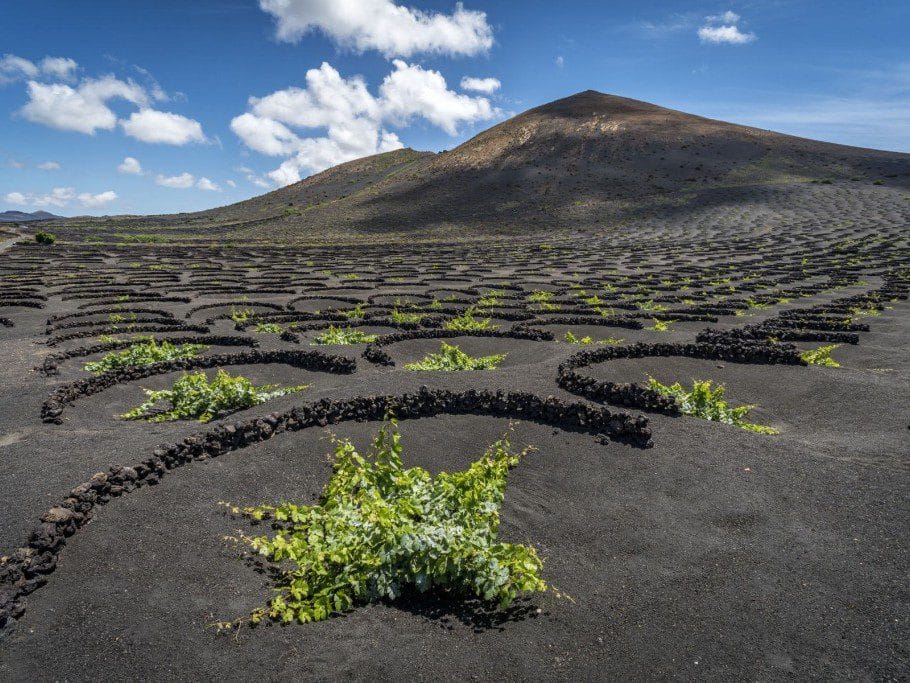
La Geria Wine Region
La Geria is Lanzarote’s most famous wine region, known for its unique cultivation methods adapted to the volcanic terrain. This landscape, considered a treasure for its vineyards planted in holes, magnificently sheltered from the winds and protected by stone walls, offers a different environment for the growth of the vine.
Cultivation Method
The cultivation system used in La Geria is truly innovative. The vines are planted in soils that have a high mineral content due to volcanic ash. This technique not only allows the roots to absorb the moisture from the morning mist, but also contributes to the uniqueness and quality of the wines produced. This process, in combination with the island’s climate and geography, creates ideal conditions for varieties such as Malvasia, which is recognized for its exceptional character.
Wineries and Tastings
A visit to the wineries of La Geria is an activity not to be missed. Many of these places offer tastings that allow you to experience the richness of their wines. Wine lovers can enjoy guided tastings where the characteristics of each wine, its elaboration process and the history of viticulture in Lanzarote are explained. These experiences not only reveal the secrets of wine production, but also celebrate the connection between the product, the land and the people who grow it.
4. Activities and Leisure
Lanzarote offers a wide range of activities to satisfy the preferences of all its visitors. From outdoor adventures to relaxing experiences, the island is an ideal place to enjoy leisure time.
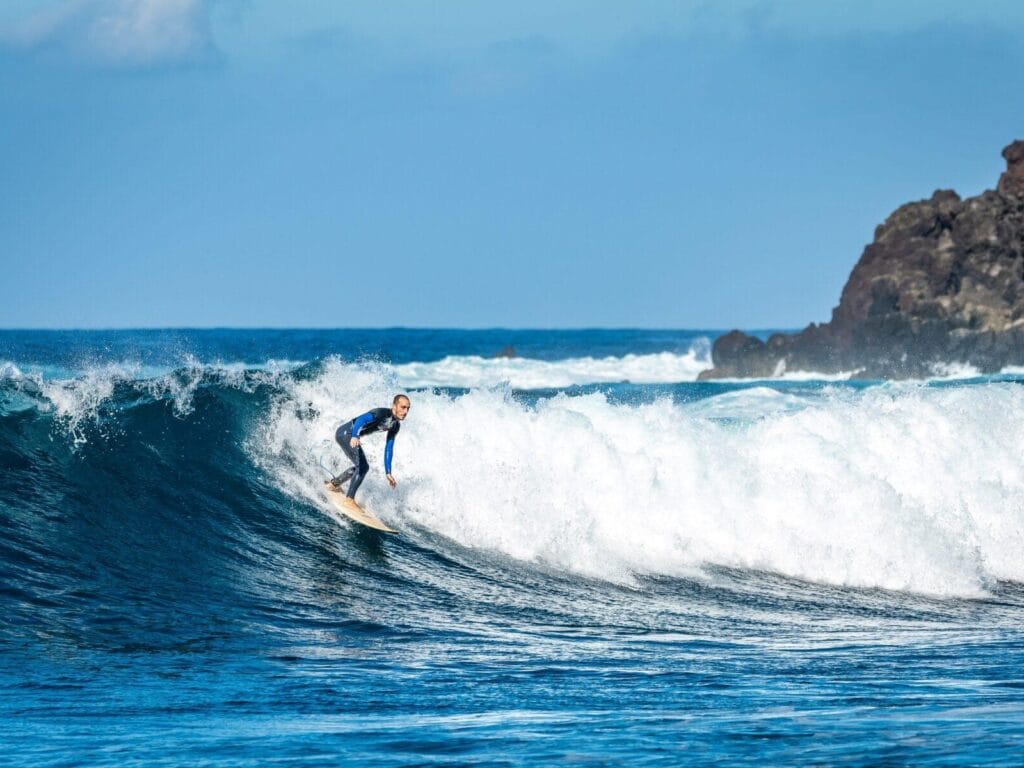
Outdoor Sports
Lanzarote’s geography, with its volcanic landscape and dramatic coastline, provides the perfect setting for a variety of sporting activities.
Hiking Trails
Lanzarote’s trails invite you to explore its natural environment. Routes such as the Caminos de los Volcanes allow hiking enthusiasts to discover breathtaking panoramic views of unique landscapes. These trails are well marked and offer different levels of difficulty, thus adapting to multiple profiles of hikers.
Surfing Beaches
The island’s beaches are another attraction for water sports enthusiasts. Playa de Famara is especially famous for its excellent waves, which makes it a meeting point for surfers of all levels. The wind and swell conditions also make this beach an ideal place for kitesurfing and windsurfing.
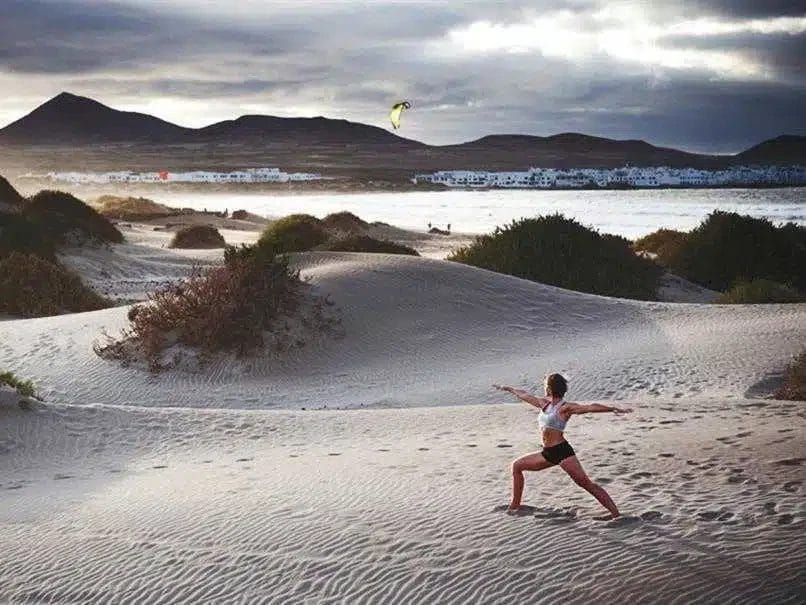
Wellness and Relaxation
Lanzarote is not only a destination for adventurers; it also offers multiple options for those looking to relax and unwind.
Yoga
The island’s tranquility and natural environment create the perfect setting for yoga practices. Many centers offer classes that take place on the beach or in spaces surrounded by nature, allowing participants to connect mind and body in a serene environment.
Spa
Spas in Lanzarote offer a variety of wellness treatments. Here you can find services such as massages, facials and body wraps, designed to relax both body and mind. Enjoying these experiences in a natural setting also adds value to relaxation.
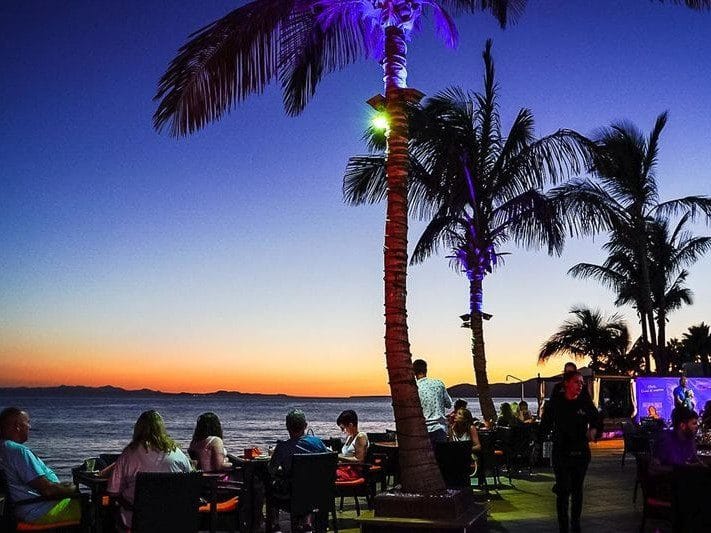
Nightlife
Nightlife in Lanzarote is vibrant and diverse, offering options for all tastes and styles.
Live Music
The island’s bars and restaurants often feature live music, creating a lively atmosphere in which to enjoy a good dinner or a drink. From local genres to international music, the variety ensures that there is always something for everyone.
Flea markets
Street markets are an essential part of the local culture. In these places, you can find handcrafted products, unique souvenirs and a sample of the local gastronomy. Enjoying these spaces also allows visitors to immerse themselves in the daily life of the island and connect with its inhabitants.
5. Transportation and Connections
To explore Lanzarote effectively, it is essential to know the transportation options available on the island. Whether traveling by plane, car or using public transportation, Lanzarote offers several ways to get around its geography.
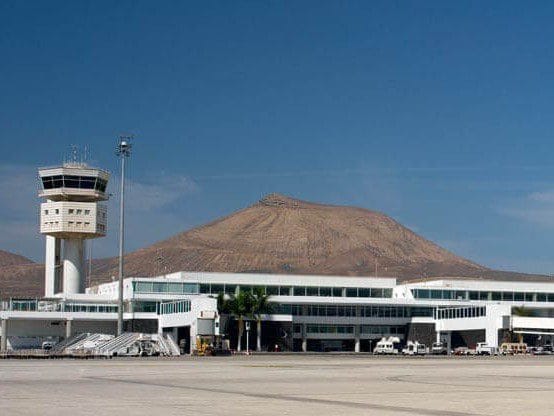
Lanzarote Airport
Lanzarote Airport, known as César Manrique Airport, is the main air access point of the island. Located in the municipality of San Bartolomé, it is approximately 5 kilometers from the capital, Arrecife.
This airport has regular connections to several European cities, facilitating the arrival of tourists throughout the year. The facilities are modern and have services such as restaurants, stores and car rental. It is a key place to start your adventure in this volcanic island.
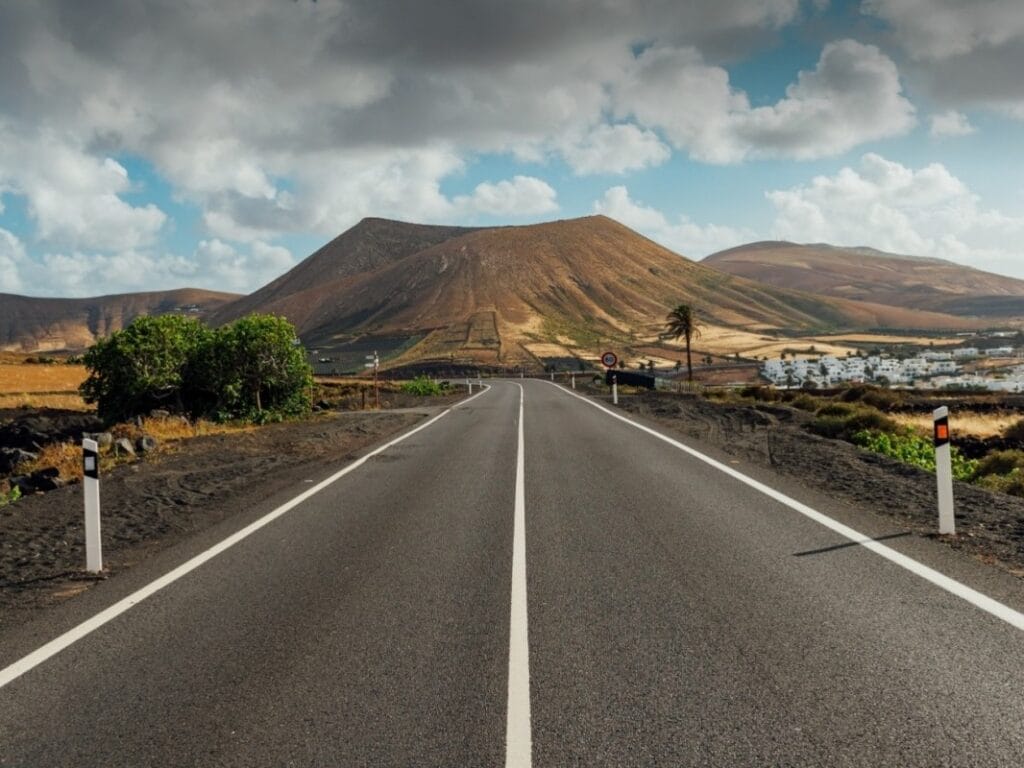
Mobility on the Island
Once on the island, there are different options for getting around. Lanzarote has an infrastructure that allows visitors to move around easily, either using private or public transportation.
Vehicle Rental
Renting a car is one of the most popular ways to explore Lanzarote. There are numerous rental companies at the airport and in the main towns. This gives you the freedom to discover every corner of the island at your own pace.
- Most of the routes are well marked and easily accessible.
- It is advisable to reserve the vehicle in advance, especially during high season.
- Rental prices vary, but you can find affordable options that allow you to enjoy the island without worries.
Public Transportation
The public transport network in Lanzarote is efficient and accessible. Buses, known locally as “guaguas”, connect the main tourist spots with the capital and other municipalities. This bus service is an economical option for getting around the island.
- The routes cover most of the tourist attractions, including the Timanfaya National Park.
- Fares are reasonable, and there is the possibility of purchasing passes that allow for more frequent travel.
- However, the frequency of services may vary, especially on weekends.
6. Sustainability and Responsible Tourism
Sustainability and responsible tourism are fundamental pillars in Lanzarote's management. The island has become a model to follow, promoting the conservation of its natural and cultural environment while offering an enriching experience to visitors.
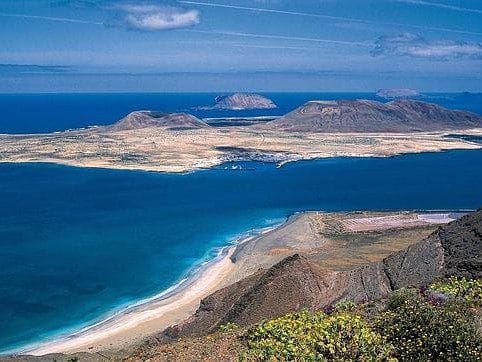
Biosphere Reserve
Since 1993, Lanzarote has been declared a Biosphere Reserve by UNESCO, a recognition that emphasizes the importance of conserving its biodiversity and natural heritage. This designation highlights the island’s commitment to environmental protection and the pursuit of sustainable development.
The Lanzarote Biosphere Reserve includes protected areas of great ecological value. Conservation efforts have resulted in initiatives that seek to balance human activities with nature, promoting practices that minimize environmental impact.
Gofio
Gofio, an ancestral food made from toasted cereals, is a staple in the Canarian diet. It can be found in different varieties, and is used in stews, as an accompaniment or even in desserts. Its texture and flavor give a singularity to each dish in which it is included, being a symbol of the gastronomic identity of the island.
Wrinkled Potatoes
Papas arrugadas (wrinkled potatoes) are another emblematic dish. This simple delicacy consists of small potato tubers cooked in their skins in salted water, which gives them a wrinkled texture and an impressive flavor. They are usually served with mojo, a traditional sauce that can be green or red, and is made from garlic, oil, vinegar and spices. This combination creates a perfect contrast that brings out the natural flavors of the potatoes.
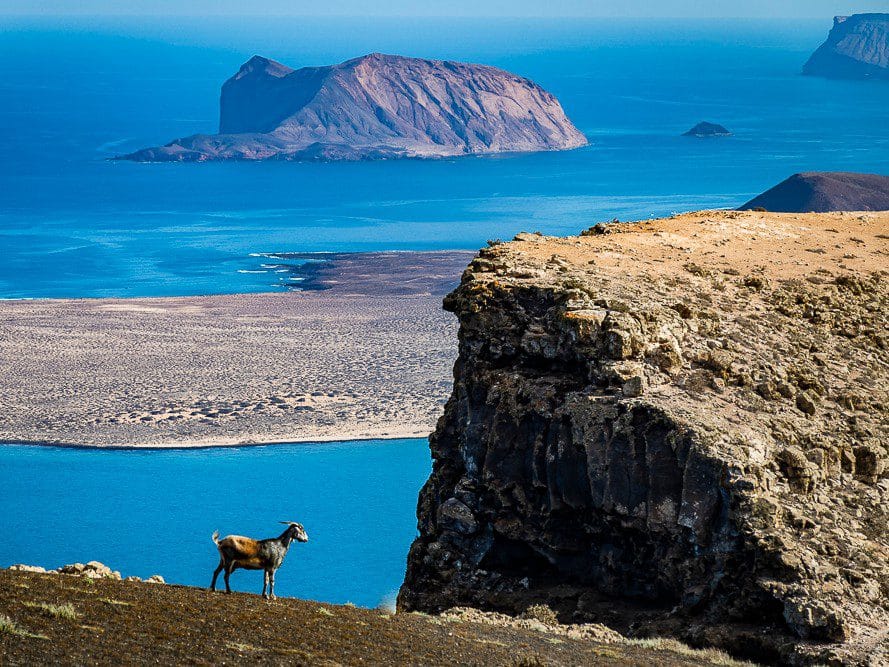
The Lanzarote Effect
This concept reflects the unique experience offered by the island, where nature, art and the local community coexist in perfect harmony. “The Lanzarote Effect” is an inspiring example of how tourism can be enjoyed without sacrificing the natural environment.
Promotion of Sustainable Practices
Lanzarote residents and businesses work towards a common goal: to promote practices that respect and care for the natural environment. Among these practices we can highlight:
- Use of renewable energies, such as solar and wind, to reduce the carbon footprint.
- Implementation of recycling and waste management programs throughout the island.
- Promoting ecological tourism, where priority is given to participation in activities that do not damage local ecosystems.
- Environmental education for visitors and residents, emphasizing the importance of caring for the island’s nature and culture.
Local Community Engagement
The Lanzarote community has united around a strong commitment to sustainability. This commitment is manifested in a number of initiatives including:
- Active participation in projects aimed at restoring and preserving the island’s natural and cultural heritage.
- Collaboration between institutions, companies and associations to promote responsible tourism development.
- Organization of events and activities that raise awareness about the importance of conservation and care of the environment.
- Development of local markets that encourage the purchase of local products, thus supporting the local economy and reducing the transportation footprint.
